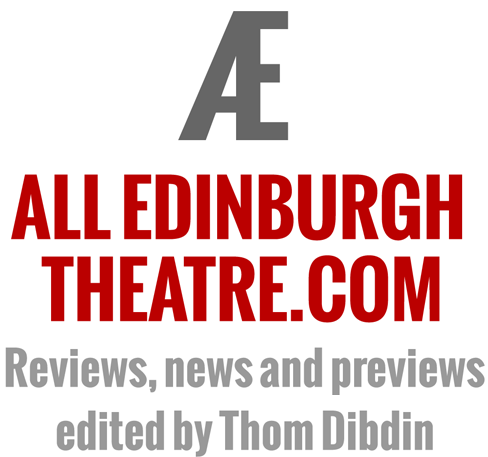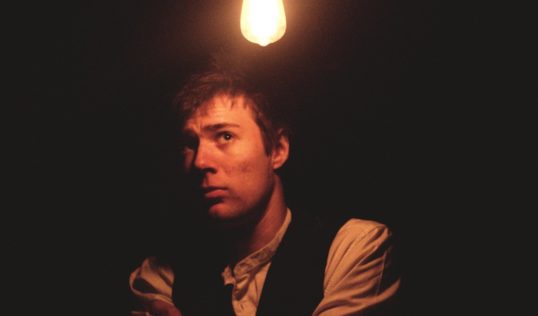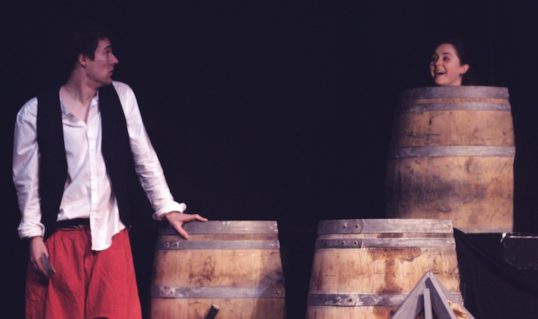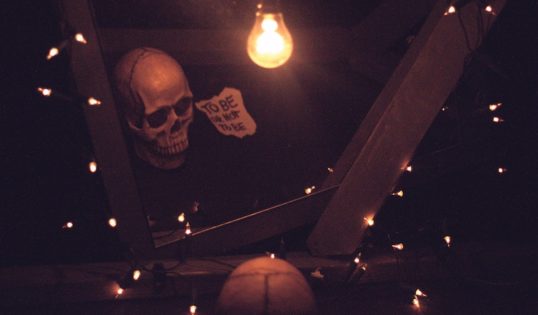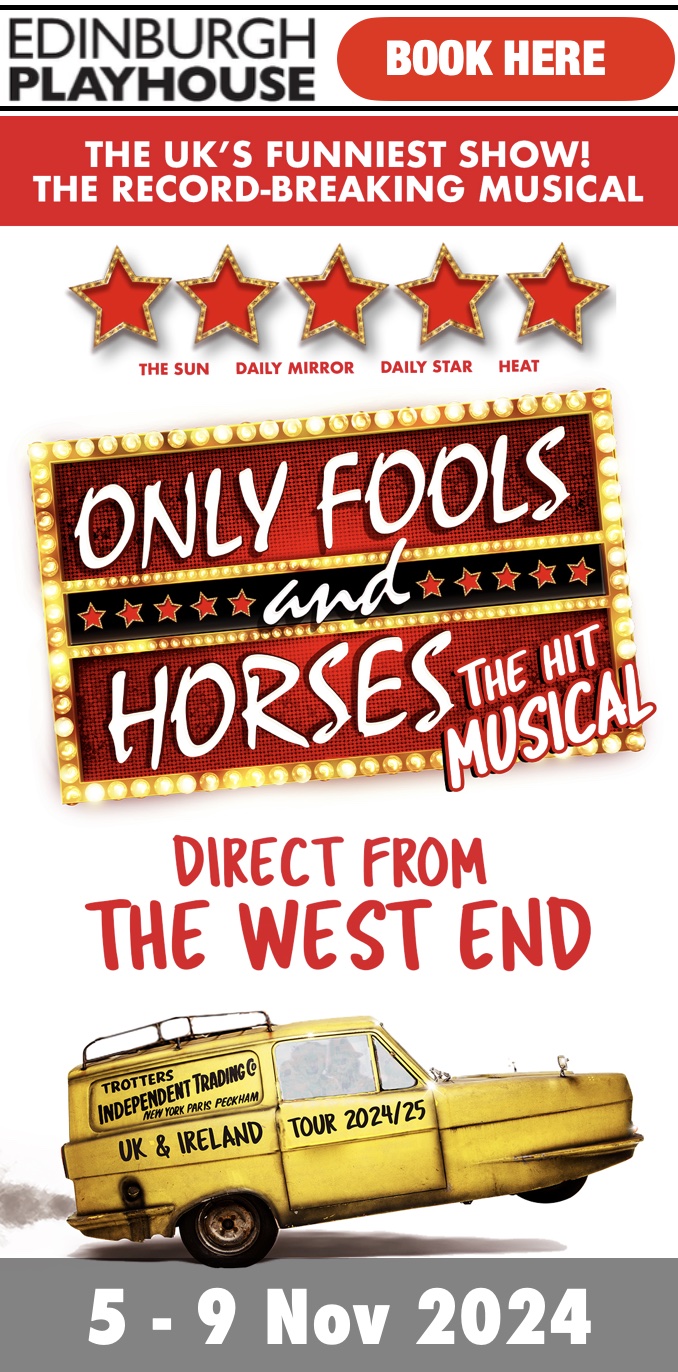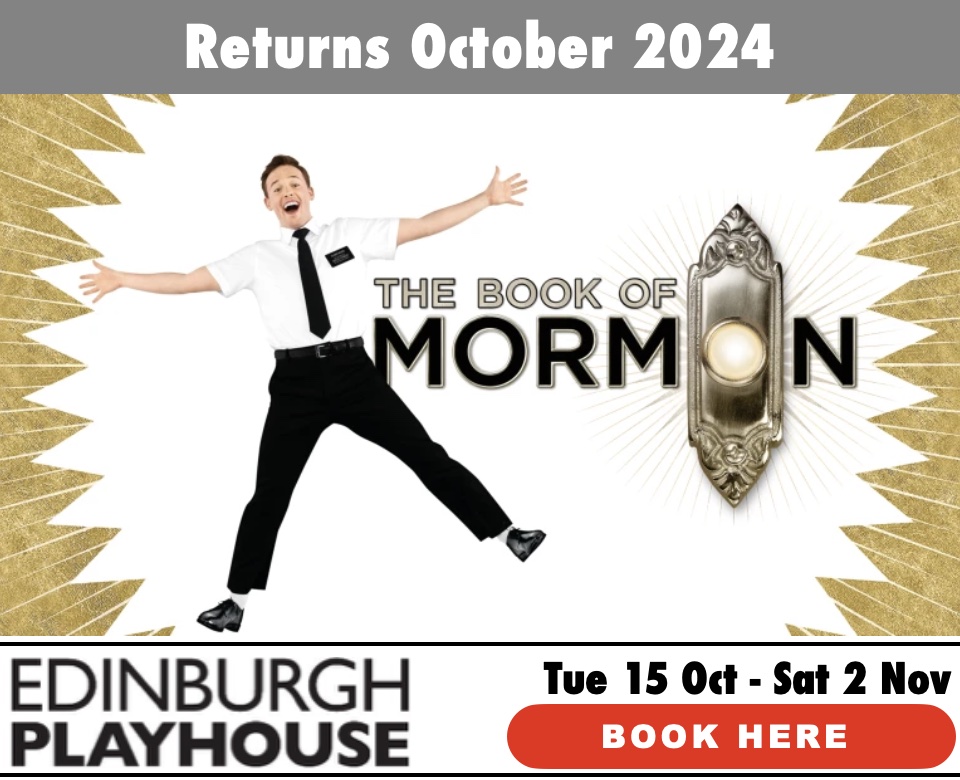Rosencrantz and Guildenstern Are Dead
★★★☆☆ Seen in preview
Bedlam Theatre: Tue 28 Feb – Sat 4 March 2017
Review by Thom Dibdin
Tense, Byzantine and thoroughly hilarious the EUTC’s production of Tom Stoppard’s breakthrough play Rosencrantz and Guildenstern Are Dead, at the Bedlam to Saturday, is a properly entertaining affair.
It is lifted by a clutch of stonking central performances, an intriguing set and a real understanding of the meta-theatrical nature of a play which takes two minor courtiers from Shakespeare’s Hamlet and elevates them to centre stage. Less clever, however, is its engagement with that parent play.
Set over the real-time of a production of Hamlet, Stoppard shows Rosencrantz and Guildenstern hanging around backstage, witnessing events which are only reported by Shakespeare and reflecting on their roles in the production.
They perform their lines from Hamlet at the appropriate times – with the relevant cast coming on stage. But mostly they mooch around wondering what is going on, complaining that nobody tells them anything and questioning the nature of luck, preordination and mortality.
In the title roles, James Strahan is a nicely trenchant Guildenstern to Michael Black’s at-sea but cynical Rosencrantz. Woken at dawn by an unnamed messenger they have been called to Elsinore as friends of Hamlet. They are first charged with spying on him and then accompanying him to England.
In a script fraught with the danger of being too clever for its own good, it is both fascinating and awe-inspiring to witness the twisted, constant questioning and game playing of the first act when it is done as well as this.
Attacks the nub
Between them, Strahan and Black ensure that the back-and-forth questioning, the word games and non sequiturs all add up to something. Just as the greatest Shakespearian actors make the meaning of his words shine through potentially opaque language, so Strahan and Black ensure that Stoppard’s punning is not just clever, but is seen to attack the nub of the issues at stake.
In a play peopled by the structurally important but less-seen characters of Hamlet, there is little surprise that the player manager who runs the theatre troupe which performs The Mousetrap for Hamlet makes a strong appearance.
Indeed, it is through the troupe that the meta-theatrical nature of the play begins to be addressed, with Louisa Doyle particularly impressive as The Player. The meeting of the company with Rosancrantz and Guildenstern on the road to Elsinore allows director Finlay McAfee to bring a level of slapstick to the comedy – where it has previously been pretty cerebral.
There is perhaps a danger of over-doing the mugging of the troupe, but they get away with it in the end, just. And Luke Morely as Alfred who plays the travesty roles of the troupe is particularly well-judged, when he could easily be just over-the-top.
There is less universal success when it comes to the other Hamlet characters, however. Charlie Ralph and Charlotte Hawkins make a fair enough fist of Claudius and Gertrude, providing the necessary understanding of their Shakespearian lines. Agnes Kenig’s Ophelia is winsome without being revealing, which feels a bit like an opportunity lost.
Begins to unwind
It is in Sam Coade’s Hamlet that McAfee’s creation of the play begins to unwind. Coade plays his Hamlet with an almost complete absence of character, delivering his lines with no attempt to find meaning in them. It might support Rosencrantz and Guildenstern’s feeling of alienation, but it also distances the audience from the performance itself.
Will Hughes’ bizarrely bearded, doddery cartoon of a Polonius goes completely the other way. He should certainly be a figure of fun, but this is simply incongruous. It feels as if McAfee is going for the cheapest laughs possible, when there is a much more highly valued sense of Polonius’s lack of worth, available.
It is all played out on a suitably clever stage design from Nic Farr with lighting by Ethan Roos. Dimly lit bulbs hang down almost to the actors head height, meaning that they seem to merge with the set. A working clock, hidden in full view centre stage, is a link to the passing time of the Hamlet, while a mirror reflects Hamlet’s “To be or not to be” line – a clever touch hinting at the Looking Glass world of the play although it is somewhat undone by not being visible to most of the audience.
It is a production of energy and pace which, if it flagged slightly in its third act on the preview night, still feels as if it has enough at its heart to pull itself back into contention.
Running time 2 hours 40 minutes (including two intervals)
Bedlam Theatre, 11 Bristo Place,, EH1 1EZ
Tuesday 28 February – Saturday 4 March 2017
Daily at 7.30 pm
Full details and tickets on the Bedlam website:https://www.bedlamtheatre.co.uk/shows/rosencrantz-and-guilderstern-are-dead
ENDS


